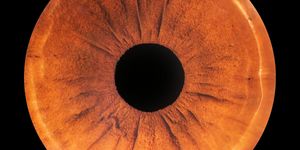
Genetic testing revealed that our ancestors have been eating wheat, rye, spelt and barley for over 8,000 years. Today, gluten, a protein found within these grains that gives baked goods their chewy consistency, has been given a bad rap. There are controversial claims that maintaining a gluten-free diet is healthier, not just for those with sensitivities or allergies.
For individuals suffering from celiac disease, however, biting into that donut can have serious medical consequences.
Celiac disease is a hereditary autoimmune disorder in which consuming the gluten protein gliadin triggers inflammation of the small intestine. What follows are a suite of symptoms, from abdominal discomfort and fatigue to chronic diarrhea and anemia.
These symptoms can vary widely between those affected and overlap with other digestive issues like wheat allergies and irritable bowel syndrome. To complicate the diagnostic process further, many who are sensitive to gluten do not have celiac disease.
As a result, over 90% of those with celiac disease remain undiagnosed. This is extremely dangerous, considering the long-term effects of celiac disease. Statistics show that celiacs who continue to eat gluten-containing grains have an elevated risk of developing heart disease, bowel cancer and even additional autoimmune diseases like type I diabetes and even multiple sclerosis.
The current diagnostic protocol for celiac disease is an antibody-based assay in which blood samples are screened for high levels of tissue transglutaminase IgA. A more invasive approach, involving taking a biopsy of the small intestine, is usually performed after a positive blood test result.
Recently, Klaus Hedman and his team at the University of Helsinki conducted a study to answer the question: is there a faster, simpler way to positively identify celiac disease outside of a centralized diagnostic lab?
The method they developed, called rapid FRET serodiagnostics provides results in just 30 minutes and doesn’t require trained technicians or lab instruments to generate a readout. The technology uses a mechanism called Förster Resonance Energy Transfer, or FRET, which detects energy transfer between two light-sensitive molecules in close proximity to each other.
Patient samples gathered from a cohort of 70 adults and children suffering from celiacs disease, alongside healthy controls revealed that FRET serodiagnostics were as robust and sensitive as current assays.
Sources: University of Helsinki, Science Daily.


